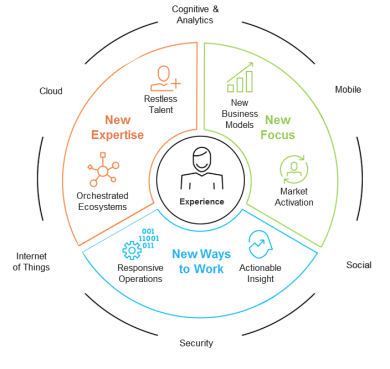
Emerging Enterprises Adopt An Asset-Light Approach To Digital Reinvention

Image: Shutterstock
With entrepreneurial aspirations of young minds running high in the country, emerging enterprises are mushrooming all around. These future leaders want to maximise the potential of latest and the best in the class technologies to delight their customer and deliver a superior experience. A typical emerging enterprise tries to build on the power of open source and is far more experimental in trying out revolutionary technologies when compared to its established and conservative counterparts.
Traditional enterprises focus on developing a strong core, own their rack space and build internal teams to manage them. Of late, such businesses have shown an increased proclivity towards a hybrid infrastructure. They have started moving heavy computations on the cloud while maintaining critical information on-premise.
In comparison, emerging enterprises own the agile layer of the technology stack. To derive maximum value from investments they prefer cloud—often a public cloud—and host the bare minimum mission-critical information on it. This allows them to process data at a pace comparable to the table toppers at a fraction of the cost. Utilising cloud saves them the capex required to set up on-premise data and processing centers. Apart from saving on the CAPEX, they save big on maintenance, integrity and personnel cost which are unavoidable in the case of an on-premise setup. This model enables them to stay nimble.
Traditional enterprises often get stuck in a rut trying to transform, innovate and keep the lights on at the same time. This proves to be a significant resource allocation challenge and leaves little or no time to plan for innovation. A cloud-based infrastructure helps alleviate this stress to an extent, but businesses remain responsible for planning and executing their own strategies.
Bimodal practices allow companies to manage two separate but coherent styles of work. Mode 1 focuses mainly on exploiting the predictable and Mode 2 is experimental in nature. Emerging enterprises can use digital infrastructure to streamline and give a facelift to their existing business while trying to exploit the technologies of tomorrow to disrupt. Having their own Bimodal IT model allows these companies to efficiently manage the known and well-understood while exploring possibilities for innovation.
So how exactly are emerging businesses driving innovation and reinvention to reduce costs, wow their customers and keep up with the competition?
In this digital day, emerging enterprises are utilizing the power of technology disruptions to differentiate themselves. AI, IoT, and Blockchain are the disruptors of tomorrow and have garnered a lot of interest from the established and emerging enterprises alike, in their race to differentiate themselves.
Data is at the very core of the reinvention. For all the enterprises to stay relevant, intelligent use of available data to make the business more customer-centric is the primary goal. Technology investments are majorly targeted towards building and delivering superior and intuitive customer experiences that engage and retain customers both online and offline.

Take Metro Shoes—a famous footwear brand as an example. The Company took its consumer engagement drive to an entirely different level by leveraging a broad range of capabilities of Watson Consumer Engagement hosted on IBM Cloud. The Company diligently collected all the consumer data across the various channels which helped it stay on top of trends, ensure availability of products and also offered ample opportunities to cross-sell and upsell.
Using IBM’s technology and CEBS marketplace integration expertise, Metro Shoes integrated itself with more than 14 online marketplaces. The Company partnered with IBM to innovate and gain more in-depth access to customer and business metrics.
Use of cognitive technologies powered by IBM Watson, allowed Metro Shoes gain insights into consumer behavior, eventually helping customise experiences across multiple channels. It also enabled the Company to offer personalized services to consumers buying in stores, provided they have bought or searched for its products online.
This is just one example among many, of how emerging enterprises are reinventing themselves using data, with technology playing a pivotal role in their reinvention.
Even the Government of India is attempting a digital facelift of the country by integrating Jan Dhan accounts, Aadhar and Mobile numbers popularly known as JAM. This allows the government to digitally record and integrate, enabling an easy-to-access and cost-effective way of reaching out to and personalizing for the Indian consumer.
Data security is one of the principal reasons companies prefer to keep their servers on premise. The availability of secure high-speed elastic cloud instances and a cloud-first approach has enabled emerging enterprises the luxury of disruptive technology at a fraction of the cost. Ready to use implementations and off the shelf solutions have reduced time to market and are rapidly improving customer experiences by leaps and bounds.
Emerging enterprises today live in a golden age where technology has brought them on equal footing with the more established players in their respective industries. Using industry ready models, they can easily chalk out a path for action and focus their resources on innovating.




